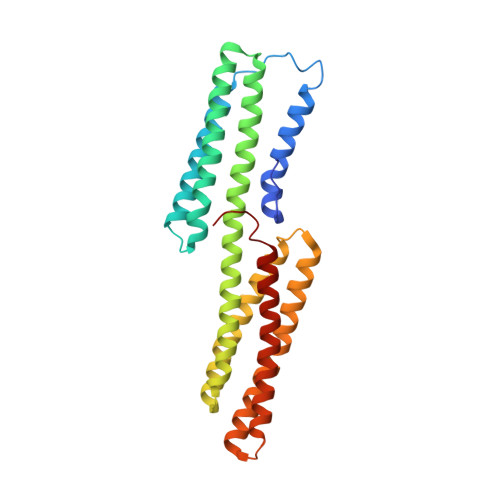Structural basis for amplifying vinculin activation by talin
Izard, T., Vonrhein, C.(2004) J Biological Chem 279: 27667-27678
- PubMed: 15070891
- DOI: https://doi.org/10.1074/jbc.M403076200
- Primary Citation of Related Structures:
1SYQ - PubMed Abstract:
Talin interactions with vinculin are essential for focal adhesions. Curiously, talin contains three noncontiguous vinculin binding sites (VBS) that can bind individually to the vinculin head (Vh) domain. Here we report the crystal structure of the human Vh.VBS1 complex, a validated model of the Vh.VBS2 structure, and biochemical studies that demonstrate that all of talin VBSs activate vinculin by provoking helical bundle conversion of the Vh domain, which displaces the vinculin tail (Vt) domain. Thus, helical bundle conversion is a structurally conserved response in talin-vinculin interactions. Furthermore, talin VBSs bind to Vh in a mutually exclusive manner but do differ in their affinity for Vh and in their ability to displace Vt, suggesting that the strengths of these interactions could lead to differences in signaling outcome. These findings support a model in which talin binds to and activates multiple vinculin molecules to provoke rapid reorganization of the actin cytoskeleton.
- Department of Hematology-Oncology, St. Jude Children's Research Hospital, Memphis, Tennessee 38105, USA. tina.izard@stjude.org
Organizational Affiliation:

















